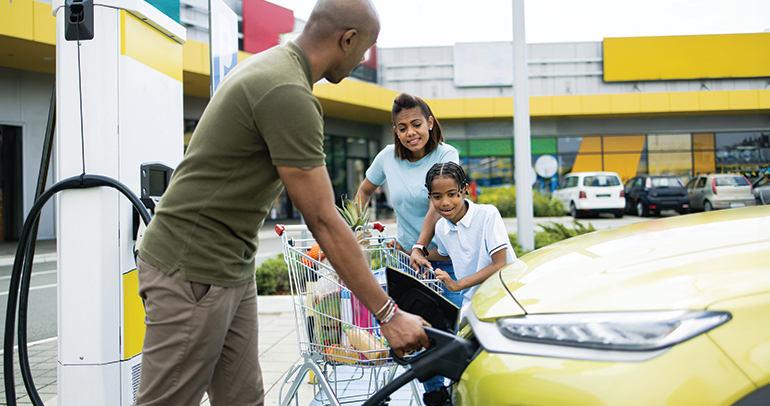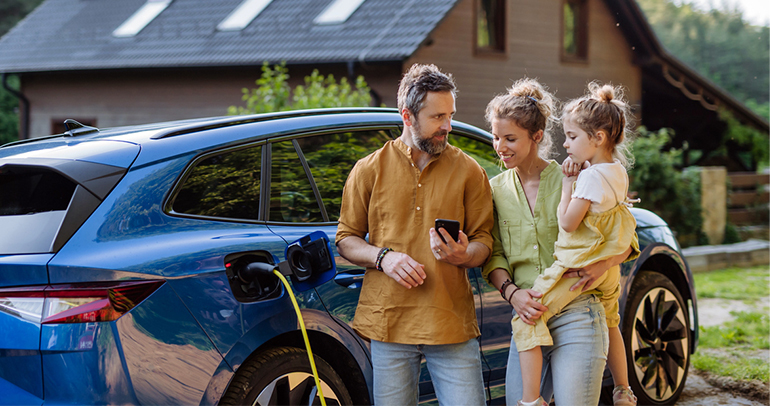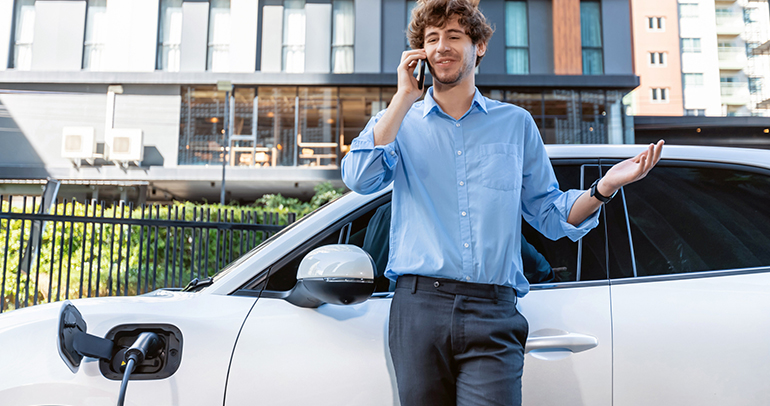
European consumers are gradually becoming more open to purchasing battery electric vehicles (BEVs). Car buyers are more familiar with available models, with 49% saying they have driven a BEV or feel they know BEVs well—a boost from 43% in 2021.
As more drivers take the plunge, exposure is increasing, too. In 2021, 32% of car owners said they knew a friend or relative with a BEV. This year, that figure has risen to 45%.
However, as adoption increases, automakers need to move beyond messaging that focuses on the environmental and financial perks and tap into the emotional aspects of BEV ownership. That’s according to the latest data from Escalent’s 2022 EVForwardTM Europe report.
This study surveyed respondents across five European countries—the United Kingdom, Germany, France, Italy and Spain—who intend to purchase a new vehicle within the next five years. While the report uncovered promising gains in buyer sentiment, it also revealed a significant gap between vehicle shoppers’ core motivations and the current positioning of BEVs.
As the pool of first-time BEV owners grows, original equipment manufacturers (OEMs) need to do more to connect with the emotional motives of prospective buyers.
The Limits of Green for BEV Shoppers
Traditionally, messaging around BEVs has focused heavily on the benefits to the planet and consumers’ wallets.
However, according to our new research, relatively few buyers are moved by such a narrow range of rational criteria, even as the volatility of gas prices places extra pressure on European drivers. In fact, BEV owners have more in common with non-owners on environmental factors than on other car ownership attitudes: 81% of BEV owners and 79% of non-owners agree that climate change is a significant problem.
Both groups desire to address the issue through their vehicle choice. 78% of BEV owners said they wanted to drive an environmentally friendly car, a view shared by 71% of non-owners. Despite this, while 43% of respondents acknowledge the green credentials of BEVs, they rank this quality ninth out of 19 in the hierarchy of car-buying criteria, indicating that concern for the environment does not translate directly to a purchase.
Instead, BEV owners show strong enthusiasm for their vehicle and welcome the promise of new technology, fun and discovery—or EV-joyment.
Seeking EV-Joyment
Escalent’s findings demonstrate a departure from the long-standing belief that BEV adoption is driven primarily by a commitment to the planet. The findings also reveal a deficit in the current approach to attracting new buyers.
A fundamental change is happening in the psychological makeup of consumers considering BEVs. The personas in our study demonstrate significant evolution—a shift that points to automakers needing to adopt broad, exciting and inclusive positioning. Rather than honing in on social responsibility, OEMs should tap into buyers’ positive emotions and aspirations.
BEV penetration is already much deeper in European markets than in the US. The vehicles are becoming a status symbol among consumers who consider themselves pioneers, particularly as they see their peer group embrace EVs.
New technology can spur people’s imaginations in a way philanthropic messaging may not. Automakers and dealers must move beyond climate-conscious positioning and focus on messaging that ignites buyers’ passions, injecting more joy into the transaction.
Rethinking EV Charging Infrastructure
As buyer attitudes evolve, confidence in EV charging infrastructure is also growing, slowly eroding what once represented a significant barrier to purchase.
Today’s buyers recognize a steady increase in public charging infrastructure. Of those surveyed, 48% indicated they now believe 21%–60% of car parks and shopping malls have installed charging points, up eight percentage points from 2021.
Just as experiencing BEVs through peers can quell the fear of the unknown, understanding the infrastructure available—and seeing its growth—can move buyers toward consideration and help establish BEVs as a practical choice.
But if European countries are to meet their ambitious electrification goals, regional, national and commercial organizations still have significant work to do to expand the availability and awareness of public charging.
One way to do this is for providers to design destinations that have charging stations alongside other alluring amenities that appeal to consumers’ self-image and lifestyle desires. For example, survey respondents selected Wi-Fi and a café as their top two choices of services they want available while charging a BEV.
A New Direction for BEVs
BEVs are seeing steady gains in sentiment, which is good news for OEMs. In 2022, 41% of car owners view BEVs more positively, up from 36% in 2021. Additionally, 18% of consumers said their next car will be a BEV: a six-percentage-point boost.
However, as EV registrations grow in Europe, customers within the BEV segment increasingly espouse diverse values, lifestyles and attitudes. Often, these broad differences do not neatly align with either the traditional mindset of an established brand buyer or a stereotypical EV owner.
Winning over the next wave of BEV adopters will take more than the “same old.” Brands would do well to listen before they sell—and learn to embrace a new set of buyer motivations rooted in the emotional aspirations of vehicle ownership.
If you would like to learn more about our findings, EVForward or how we can help you refine your BEV strategy, click the button below to connect with us.
About EVForward™ Europe 2022
The second annual wave of the EVForward Europe study was conducted across five European countries: United Kingdom (n=1,941), Germany (n=2,011), France (n=1,723), Italy (n=1,915) and Spain (n=1,806). It was a market-representative sample of 9,396 respondents and included a survey that fielded from July to August 2022. Respondents are ages 18 to 80 with a primary vehicle model that’s 2016 or newer, and all intend to purchase a new vehicle within the next five years. Data were weighted by age and gender to match the demographics of the new-vehicle buyer population and by vehicle segment to match current vehicle sales. The sample for this research comes from an opt-in, online panel. As such, any reported margins of error or significance tests are estimated and rely on the same statistical assumptions as data collected from a random probability sample. Escalent will supply the exact wording of any survey question upon request.








